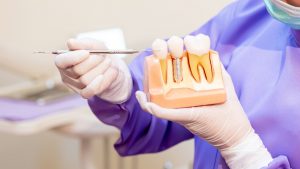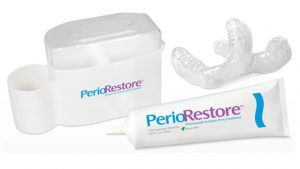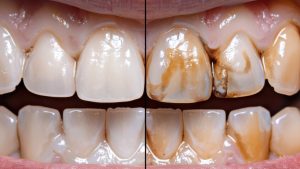Oral hygiene is a vital aspect of maintaining overall health. Regular dental cleanings are an essential part of this routine, as they help remove plaque, tartar, and bacteria from the teeth, gums, and mouth. While brushing and flossing at home are crucial, professional dental cleanings ensure that areas of the mouth that are hard to reach are properly maintained.
Unlike a routine cleaning, deep cleaning targets the areas below the gumline to address issues like gum disease and heavy plaque buildup. In this article, we’ll explain what deep teeth cleaning is, how it differs from regular cleaning, and why it’s an important step in maintaining optimal oral health.
What is Deep Teeth Cleaning?
Deep teeth cleaning, also known as scaling and root planing, is a comprehensive dental procedure aimed at treating gum disease and preventing further complications. Unlike a routine cleaning that only removes surface plaque, deep cleaning targets the areas beneath the gum line where plaque and tartar can accumulate. The procedure involves two main steps:
- Scaling: The removal of plaque and tartar from both above and below the gum line.
- Root Planing: Smoothing the roots of the teeth to remove bacteria and promote gum healing.
This process helps to address gum disease by cleaning out infection-causing bacteria and encouraging the gums to reattach to the teeth.
When is Deep Cleaning Recommended?
Deep teeth cleaning is usually recommended when a dentist detects signs of gum disease, excessive plaque buildup, or pockets between the gums and teeth that are too deep for regular cleaning to reach. This treatment is typically necessary when there is significant tartar below the gum line or if a patient is showing symptoms of more advanced stages of gum disease, such as periodontitis.
Conditions that May Lead to Needing Deep Cleaning
Several conditions can make deep cleaning necessary, including:
- Gum Disease: Conditions like gingivitis or periodontitis cause inflammation and infection in the gums.
- Plaque and Tartar Buildup: Plaque that hardens into tartar can only be removed professionally and may lead to gum irritation and further oral issues.
- Periodontal Issues: When gum disease has progressed to affect the structures supporting the teeth, deep cleaning can help stop the progression.
If you’re experiencing any of these issues, deep cleaning might be the solution to restore and maintain your oral health. For more details, feel free to explore our deep cleaning services.
The Deep Teeth Cleaning Procedure
The deep teeth cleaning procedure is a multi-step treatment designed to remove plaque, tartar, and bacteria below the gumline, where regular brushing and flossing can’t reach. Here’s a step-by-step breakdown of the process:
1. Initial Assessment: Examination and X-rays
Before beginning the deep cleaning procedure, your dentist will conduct a thorough examination of your teeth and gums. This includes measuring the depth of the pockets around your teeth using a special tool called a probe.
If these pockets are deeper than 3 millimeters, it indicates potential gum disease. In addition, X-rays may be taken to assess the condition of the bone structure beneath the gums and to check for any hidden issues.
2. Scaling: Removal of Plaque and Tartar
Scaling is the first step of deep cleaning. During this stage, the dentist or dental hygienist will use specialized instruments to carefully remove plaque and tartar from both above and below the gum line.
This process may involve the use of hand-held tools or an ultrasonic scaler, which uses vibrations to break up stubborn tartar. Scaling targets areas where plaque has hardened into tartar, particularly below the gumline where brushing and flossing can’t reach.
3. Root Planing: Smoothing the Tooth Roots
After scaling, the next step is root planing, which involves smoothing the surfaces of the tooth roots. The goal is to remove any remaining bacteria and rough spots where plaque and tartar could easily reattach. Smoothing the roots helps the gums heal and reattach to the teeth, preventing further bacterial buildup and promoting better overall gum health.
4. Anesthesia or Sedation Options
Deep teeth cleaning can sometimes cause discomfort, especially when dealing with deep gum pockets or sensitive areas. To ensure the procedure is as comfortable as possible, local anesthesia is often used to numb the areas being treated. For patients who experience anxiety or fear about the procedure, sedation options such as oral sedatives or nitrous oxide (laughing gas) may also be offered. Your dentist will discuss the best option for your comfort.
5. Duration of the Procedure
The length of the deep cleaning procedure depends on the extent of the cleaning required. For a full-mouth deep cleaning, the procedure typically lasts 1.5 to 2 hours. In some cases, the treatment may be split into two or more appointments, especially if the patient has severe gum disease or extensive tartar buildup. This allows the dentist to treat one section of the mouth at a time to ensure thorough cleaning and healing.
This treatment is an essential part of managing gum disease and preventing its progression. For individuals with more advanced gum issues, seeking professional care from gum disease treatment experts can help ensure a healthier smile and long-term oral health.
Benefits of Deep Teeth Cleaning
Deep teeth cleaning offers several significant benefits that go further than a standard dental cleaning. Here are the key advantages:
1. Prevention of Gum Disease and Tooth Loss
One of the primary benefits of deep cleaning is its ability to prevent the progression of gum disease. By removing plaque and tartar buildup beneath the gumline, deep cleaning reduces the risk of conditions like gingivitis and periodontitis.
These conditions, if left untreated, can lead to tooth loss or cracked teeth. Deep cleaning helps restore gum health and prevents further damage to the teeth and gums, promoting the long-term retention of your natural teeth. For more information on how to handle a cracked tooth, check out our guide on how to fix a cracked tooth.
2. Improvement in Overall Oral Health
Deep teeth cleaning not only targets the visible surface of the teeth but also addresses the root causes of gum disease. By eliminating harmful bacteria that can cause infections and decay, deep cleaning helps maintain a healthier oral environment. This improved oral health supports a better overall immune system and reduces the risk of other health issues associated with oral infections.
3. Reduced Gum Inflammation and Bleeding
If you’re experiencing gum inflammation, swelling, or bleeding, deep cleaning can provide significant relief. By removing the bacteria and plaque that cause these symptoms, the procedure helps reduce irritation and inflammation. Over time, this reduction in gum inflammation can lead to healthier, more resilient gums that no longer bleed during brushing or flossing.
4. Better Breath and Fresher Mouth
Persistent bad breath, or halitosis, is often a result of bacteria buildup in the mouth, especially around the gumline. Deep cleaning effectively removes this buildup, leading to fresher breath and an overall cleaner feeling in the mouth. By addressing the root causes of bad breath, deep cleaning helps you feel more confident and comfortable with your oral hygiene.
5. Long-term Oral Hygiene Maintenance
Deep teeth cleaning is an investment in your long-term oral health. While it may require more time and attention than a regular cleaning, the results can last for months or even years, depending on how well you maintain your oral hygiene.
Regular deep cleanings, combined with good daily habits like brushing and flossing, can prevent the recurrence of gum disease and other oral health issues, helping you maintain a healthy smile for years to come.
Aftercare and Recovery Tips

After undergoing a deep teeth cleaning, it’s important to take good care of your mouth to ensure a smooth recovery and maintain the benefits of the procedure. Here are some essential aftercare tips:
1. Recommended Oral Care Post-Treatment
Following your deep cleaning, it’s crucial to continue practicing good oral hygiene to support healing and maintain a healthy mouth. Here’s what you should do:
- Gentle Brushing: Brush your teeth gently using a soft-bristled toothbrush for the first few days to avoid irritating sensitive gums. Make sure to brush twice daily, especially along the gumline.
- Flossing: Resume flossing after a few days if your gums are not too sore. This helps prevent plaque buildup and supports gum health.
- Mouthwash: Use an antimicrobial or saltwater mouthwash to help keep the area clean and reduce bacteria, promoting faster healing. You may also consider incorporating practices like hydrogen peroxide teeth cleaning into your routine for extra cleanliness.
2. Tips for Managing Sensitivity and Discomfort
It’s normal to experience some sensitivity or discomfort after a deep cleaning, especially if you had significant tartar buildup or deep gum pockets treated. Here’s how you can manage it:
- Pain Relief: Over-the-counter pain relievers, such as ibuprofen or acetaminophen, can help reduce discomfort. Always follow the recommended dosage.
- Cold Compress: Applying a cold compress to the outside of your face near the treated areas can reduce swelling and discomfort.
- Avoid Hot and Cold Foods: Sensitivity is common after deep cleaning, so try to avoid eating hot or cold foods and beverages for a few days to minimize discomfort.
3. Foods and Habits to Avoid After Deep Cleaning
To help with the recovery process, there are a few things you should avoid right after the procedure:
- Avoid Hard, Crunchy, or Sticky Foods: For the first few days, stay away from hard or sticky foods, like nuts, chips, or caramel, as they may irritate your gums or get stuck in the treated areas.
- Spicy or Acidic Foods: Spicy foods, citrus fruits, and acidic beverages like tomato juice or vinegar can irritate sensitive gums.
- Smoking: Smoking slows down the healing process and increases the risk of infection. It’s best to avoid smoking for at least a few days after the treatment.
4. Importance of Follow-Up Visits
To ensure that your gums are healing properly and that the deep cleaning has been effective, follow-up visits are important. Your dentist may schedule a follow-up appointment a few weeks after the procedure to check for improvements and ensure that your gums are healing well.
Regular checkups and cleanings will help maintain your oral health and prevent future issues from arising. If you need any further guidance or would like to schedule a follow-up visit, feel free to book an appointment with us at MySmile Dental Care. We’re here to help you maintain your oral health every step of the way.
Conclusion
Deep teeth cleaning is an effective and essential procedure for maintaining optimal oral health, particularly for those dealing with gum disease or excessive plaque buildup. By thoroughly cleaning beneath the gumline, deep cleaning helps prevent gum disease, tooth loss, and other oral health issues while improving overall gum and tooth health. With proper aftercare, including gentle brushing, managing sensitivity, and avoiding irritants, you can ensure the long-term benefits of your treatment.








